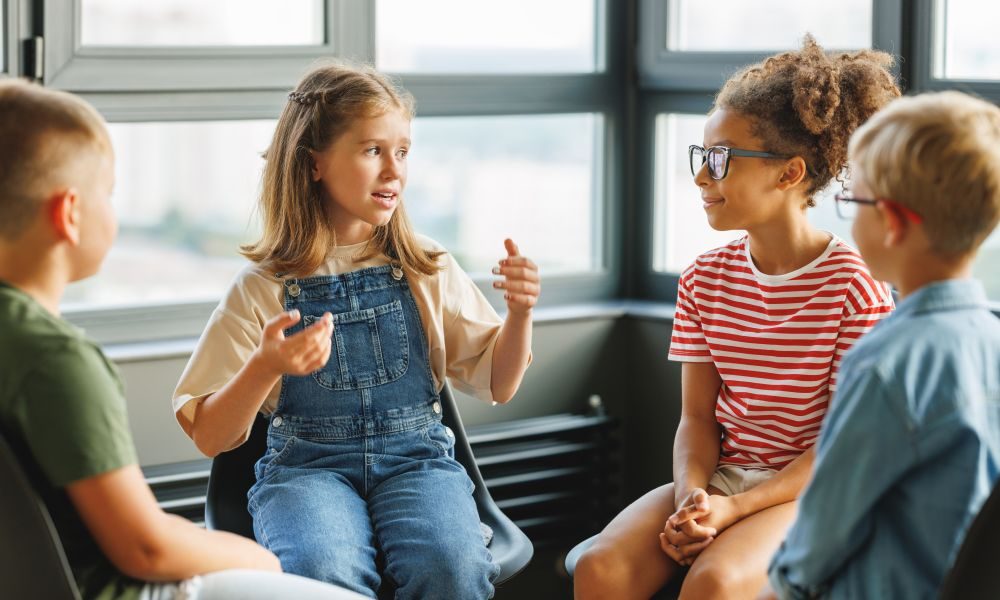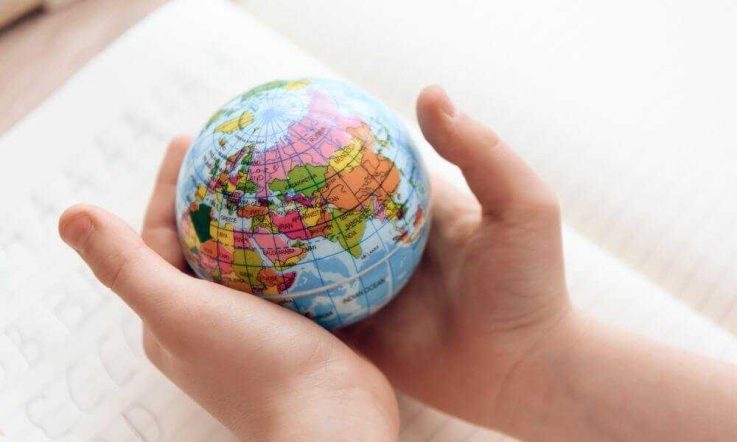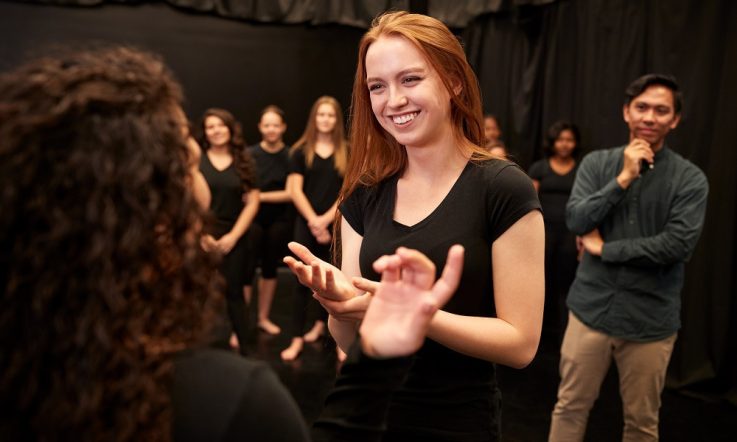‘By fostering empathy, critical thinking, and cultural awareness, drama plays a vital role in shaping the next generation of global citizens as they prepare to enter an increasingly interconnected world.’ In our latest reader submission, Lauren Backhouse – Phase Leader, Upper Primary at the Budapest British International School (BBIS) in Hungary – shares how she has incorporated drama into her own classroom practice to teach Global Citizenship Education.
The term 'global citizen’ will likely be familiar to many readers. Over the past decade, a focus on Global Citizenship Education (GCE) has gradually established itself within curriculum development plans, professional development sessions and beyond.
At its core, GCE focuses on teaching students to think beyond the country or community they belong to and come together to ensure that the world is a fair, just and equitable place to live in. How can we, as teachers, encourage our students to empathise, collaborate and think critically, and to look beyond their own community and really see the world as experienced by others?
While schools have often looked to PSHE (Personal, Social, Health and Economic) programs, social studies or languages to foster the qualities of a global citizen, one powerful tool exists that can sometimes be overlooked – drama.
Imagine a classroom where students can be transported all over the world, asked to step into the shoes of a refugee, or return to a moment in our past to uncover new meaning. Drama and storytelling have the ability to allow students from diverse backgrounds to explore different values and attitudes, and, importantly, offer them a voice in which to express themselves. In moments like these, drama becomes far more than a performance-based art into a dynamic educational tool which develops students’ capacity to understand perspectives which may be far removed from their own.
Drama in practice – exploring migration through a picture book
Over the past 4 years, I have been working in a year 4 classroom, and in the Spring term we inquire into the concept of migration. The first year I started this unit by looking at passports and visas, and reasons for migration that are both man-made (such as wars), and natural (such as floods or famines).
We went through some classic activities, such as ‘what would you pack in your bag if you could only take 5 things?’ At the end of the unit, my students could tell you many things about why people migrated, but something was missing. Whilst my students could relay facts, they had not learnt to empathise with any of the situations that they had learnt about. To them, what they had learnt seemed like stories rather than real life.
Fast forward to the next year and having worked with our exceptional Head of Drama Matthew Readman, I now had a better understanding of how to incorporate drama into my practice. This time, during our migration unit, we centred the work around The Island – a powerful picture book by Armin Greder (2007). The picture book tells the story of a man who mysteriously arrives on an island and is different to those around him. Initially accepted, soon fear and suspicion begin to spread amongst the villagers and the man is sent back out to sea to meet an uncertain fate.
In my classroom, we started our unit by role-playing the man. Showing a picture of his rickety, wooden raft and playing sounds of the sea, students considered the emotions of the man. What might have forced him on such a dangerous journey? What did he hope to find in a new land? They created a backstory for the man before he was forced to flee his home by freeze framing different points of his life. Through their imagination we saw still images of his children's birthdays, his father’s funeral and his graduation. They decided that this man had been a prominent member of his community and owned a shop that he had been proud to build from scratch.
Building on this starting point, students then explored the complex reasons that force many people to become displaced. With this new knowledge, we returned to the man and the students decided what had forced him to flee his home in search of safety. We then considered other ways that the man may have travelled to safety, and the students explored stories of real refugees – from Venezuelans undertaking arduous journeys on foot, to perilous boat crossings.
The activity of packing a bag from the previous year was elevated through drama, with students role-playing having to pack their bag with a family and boarding a boat to an unknown destination. Upon arrival, we simulated a visa inspection where they were divided into groups based on the passports they held. This sparked meaningful conversations, as students researched their own passports and considered global mobility – for example, the privilege of visa-free travel and challenges faced by those who require visas for travel.
Importantly, within this inquiry, we considered the role of the Islander who had so callously cast the man back out to sea. Why had they reacted in such a way instead of offering to help? Students hot-seated the different islanders from the picture book and, when questioned, there was one overarching theme – fear. Fear of the unknown, fear of those who are different, fear of change.
The students began to unpack these fears, discussing how they might stem from misinformation, prejudice, or a lack of resources. Through this process, they explored how fear can drive individuals and communities to make decisions that prioritise self-preservation over compassion. This discussion opened up a deeper reflection on the moral dilemmas faced by both individuals and societies when confronted with crises, drawing parallels to current global responses to refugees and migrants.
As the unit drew to a close this time, my students had a depth of knowledge that the previous cohort did not have. Armed with information, empathy and different perspectives, the students were able to think critically about the complexities of migration. They could articulate the challenges faced by refugees, the fears and biases of host communities, and the systemic inequalities that shape these experiences. Importantly, they could also see how we needed to work together to become part of the solution.
Challenges and misconceptions
Drama is likely to hold different meanings for different teachers. For some teachers it is viewed as a one-off performance at Christmas, or at the end of the year, for others it can provoke a sense of dread. I used to fall into the latter category. As someone who fears being on stage, the thought of incorporating drama into my classroom practice and pretending to be someone else filled me with embarrassment and for a long time, I avoided it.
It was not until recently, under the mentorship of Mr Readman, that I viewed drama in a different light. Working with him made me appreciate that drama does not have to be all ‘bells and whistles’. If needed, you can hop into a role, but often it is about guiding students through a journey to make them identify with a story or empathise with a character so that they are able to build their own understanding of a world.
However, I’ve found that it can be challenging incorporating drama into the curriculum. Certainly in the schools I have worked in, time is always an issue when there is so much that needs to covered in the curriculum, or when timetables are already bursting at the seams. Space can also be a challenge. I was lucky enough to have a classroom that allowed me to move desks and create an open space for role-playing, but this is not always the case. Here, activities such as hot-seating work well, as all that is needed is space for students to sit.
In my opinion, however, the biggest challenge is a lack of training to help educators feel confident to effectively incorporate drama techniques into their planning. Instead, they become standalone lessons, focused on rehearsals for performances. Without this proper support, it is easy to sideline drama despite its potential for engaging students.
Final thoughts – the stage as a global classroom
At BBIS, we’ve seen that drama can hold a powerful place within GCE, offering students an opportunity to engage with global issues in ways that few subjects can. By fostering empathy, critical thinking, and cultural awareness, drama plays a vital role in shaping the next generation of global citizens as they prepare to enter an increasingly interconnected world.
I have seen first-hand the impact the drama has had on my students, who were able to stop seeing the lives of others as something they read about on the internet. They cared, they understood, and they wanted to do something to help. This is the power of drama. I will continue to use drama to build compassionate, globally minded leaders of tomorrow and I hope that you take a little bit of inspiration to do so too.
References
Greder, A. (2007). The Island. Allen & Unwin, A&U Children’s.
Lauren Backhouse says she believes the biggest challenge is a lack of training to help educators feel confident to effectively incorporate drama into their classroom practice.
Thinking about your own context: What are your own views on using drama in the classroom as a way of engaging with global issues? How confident are you in incorporating this into your own planning? What additional support would help, and who in your school may be a good first point of contact or mentor for this?



